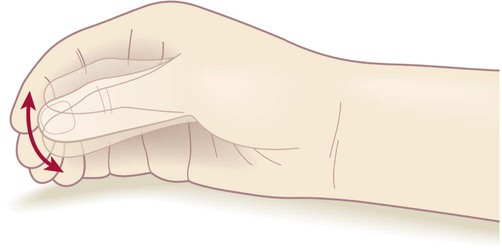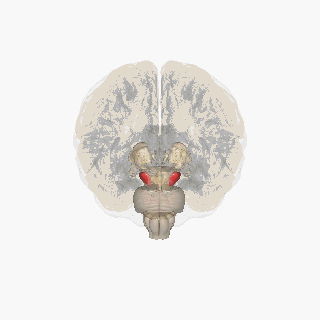Pure autonomic failure is a rare degenerative disease of the autonomic nervous system.
Symptoms include dizziness and fainting (caused by orthostatic hypotension), visual disturbances and neck pain. Chest pain, fatigue and sexual dysfunction are less common symptoms that may also occur.
 ‘Pill-rolling’ rest tremor as found in Parkinson’s disease.
‘Pill-rolling’ rest tremor as found in Parkinson’s disease.
The autonomic nervous system is a control system that acts largely unconsciously and regulates bodily functions. It has a sequential organization: The preganglionic neuron synapse onto a postganglionic neuron before innervating the target organ. It's a bit similar to the upper/lower motor neuron/muscle assemblage.
Longitudinal studies have reported that Pure autonomic failure can phenoconvert to a central synucleinopathy with motor or cognitive involvement-i.e., to Parkinson disease, dementia with Lewy bodies, or multiple system atrophy.
Synucleinopathies are neurodegenerative diseases characterised by the abnormal accumulation of aggregates of alpha-synuclein protein in neurons, nerve fibres or glial cells.
These longitudinal studies have classified patients clinically as having Pure autonomic failure based on neurogenic orthostatic hypotension without an identified secondary cause or clinical evidence of motor or cognitive impairment due to central neurodegeneration.
This approach lumps together two neurogenic orthostatic hypotension syndromes that are pathologically and neurochemically distinct.
- One is characterized by intraneuronal cytoplasmic alpha-synuclein aggregates and degeneration of postganglionic sympathetic neurons, as in Parkinson disease and Dementia with Lewy Bodies.
- The other is not, as in multiple system atrophy.
Clinical and postmortem data show that the form of Pure autonomic failure that involves sympathetic intraneuronal synucleinopathy and noradrenergic deficiency can phenoconvert to Parkinson disease or Dementia with Lewy Bodies-but not to multiple system atrophy.
Conversely, Pure autonomic failure without these features leaves open the possibility of premotor multiple system atrophy.
Multiple system atrophy is a rare neurodegenerative disorder characterized by autonomic dysfunction, tremors, slow movement, muscle rigidity, and postural instability (collectively known as parkinsonism) and ataxia. This is caused by progressive degeneration of neurons in several parts of the brain including the basal ganglia, inferior olivary nucleus, and cerebellum.
MSA generally show little response to the dopamine medications used to treat Parkinson's disease and only about 9% of MSA patients with tremor exhibit a true parkinsonian pill-rolling tremor.

 Source Wikipedia: FrozenMan - Own work
Source Wikipedia: FrozenMan - Own work

